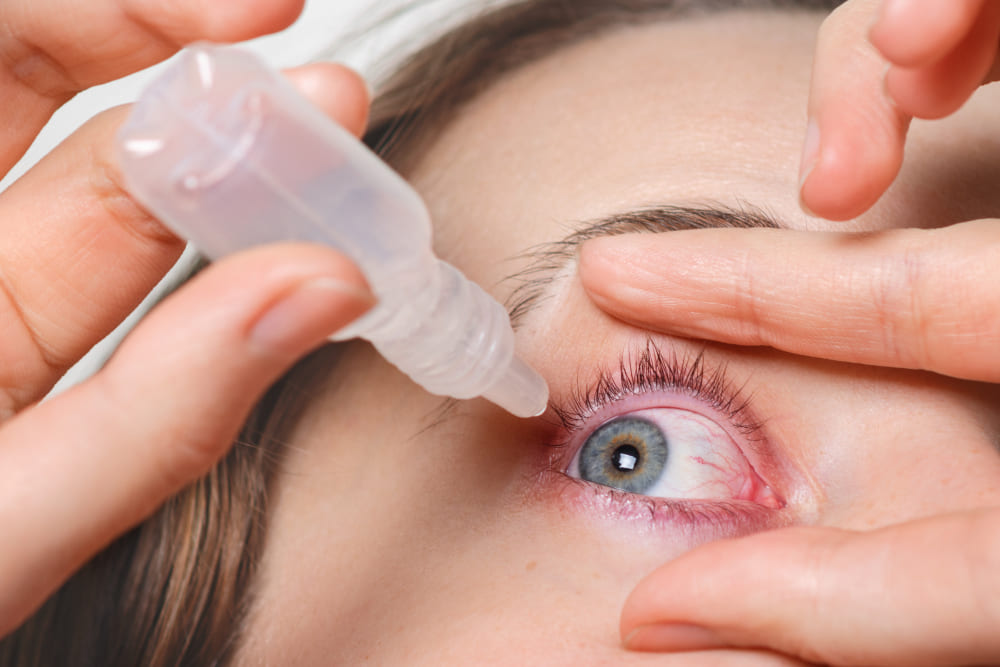- Swimming is one of the best sports activities, not only helping to improve physical health but also bringing mental relaxation. However, like any other sport, swimming also poses risks of illness and injury if not done properly. In this article, we will learn effective preventive measures to protect your health when swimming to fully enjoy the fun of this activity.
Prevent illness when swimming
Eye membrane inflammation

Inflammation of the eye membranes (acute eye membrane inflammation/pink eye) is easy to get when learning to swim because the eye membranes are constantly exposed to water. To prevent it, people with pink eye should be banned from going to the swimming pool to avoid infection. When swimming, you should wear swimming goggles so that the water does not continuously come into contact with your eyes; After swimming, apply medication or diluted clean saline.
Ear infections
While swimming, water can easily get into the ears, leading to inflammation of the outer or middle ear. If water gets into your ear, use your elbow to press firmly into the ear canal and then hop on one foot to let the water flow out or use a cotton swab to absorb all the water. Do not use your fingers or hard objects to clean the ear canal as it will easily damage the skin of the canal ear, perforating the eardrum. Do not go into the water when you have an ear infection. You can use earplugs when swimming.
Inflammation of the nose and throat
Due to exposure to dirty water and fatigue after exercise, bacteria can easily penetrate the mucous membranes of the nose and throat. People who are new to swimming have poor breathing techniques, so they easily choke on water. Water penetrates deep into the nose and throat, causing inflammation. Initially, the bridge of the nose is sore, the nasal discharge is heavy or thick, sometimes there is a headache, leading to fever and cough. Therefore, it is necessary to practice breathing properly to avoid choking on water.
If water gets into the nose or throat, blow vigorously to get all the water out. Avoid squeezing the nose too hard to get water into the middle ear, causing an ear infection. After swimming, you must use nasal drops and salt water rinse. If you have inflammation, in addition to taking medicine, you should use a warm washcloth to cover your nose to increase circulation to the nose and heal quickly.
Prevent injuries when swimming
Swimming front crawl and butterfly swimming often cause shoulder injuries, while breaststroke can easily cause knee injuries.

Shoulder joint damage
Shoulder injury occurs when: Not warming up the shoulder joint carefully, performing movements using great pressure. Using a water fan while swimming is too tiring, but exerting too much effort can easily lead to shoulder injury. After an injury, it is necessary to apply heat and gently massage the shoulder. If your ligaments are severely stretched, you need to treat them completely before you can continue exercising.
Knee joint damage
When swimming breaststroke, using inappropriate leg strength or working too hard (swimming too fast, too long) will easily injure the knee joint. Before swimming, you need to warm up your shoulder, knee, and foot joints thoroughly. When practicing breaststroke, you need to alternate between hand movements and foot movements. You should not practice one movement continuously for a long time to avoid local fatigue, which can easily cause injury.
Cold infection
Cold infection reduces resistance, making you susceptible to fever and infection. When the swimming water temperature is much lower than body temperature (autumn/summer rain), children’s bodies radiate heat faster than adults, and the fat layer under the skin is thin, making them susceptible to cold.
Signs of cold: First is shivering, mouth fluttering, and lips may turn purple. If swimming is continued, it would be dangerous. If your face is pale, you can use petroleum jelly to rub your navel, palms, feet and nostrils. Do not lie in one place, but sit or walk gently in a sheltered place.
Note: When teaching and learning to swim in ponds, lakes, rivers, and oceans, you need to carefully check the water quality and ensure a thorough warm-up, correct swimming technique, and prevent cold exposure more promptly. If your child suffers from certain diseases such as bronchial asthma, chronic respiratory disease, allergic rhinitis, sinusitis, allergic inflammation, etc., he or she should see a doctor for advice. After that, the parents will decide about letting your child learn to swim.
In addition, children, teachers and parents also need to pay special attention to safety conditions, as well as be equipped with drowning prevention skills.
Please refer to other related information:
And information about drowning prevention courses:
Source: Department of Physical Education – Ministry of Education and Training